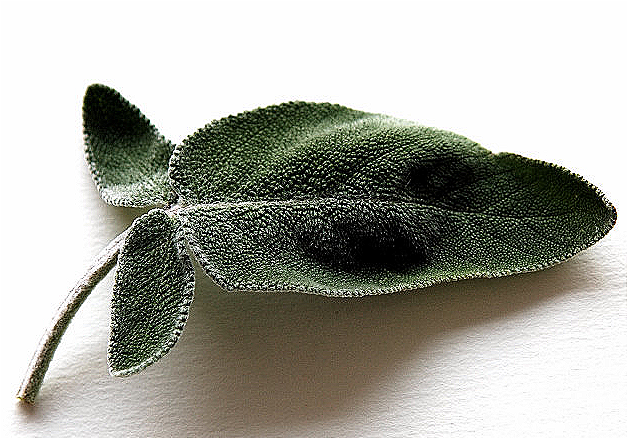Salvia Officinalis (Sage) Leaf Extract, derived from the leaves of the Salvia officinalis plant, commonly known as sage, is used in cosmetics, traditional medicine, and the food industry. It is known for its antioxidant, anti-inflammatory, antibacterial, and astringent properties. This extract is frequently used in skincare and haircare products, where it helps regulate sebum production, purify, and protect the skin from environmental damage. Sage is also valued for its toning and regenerative effects.

Chemical Composition and Structure
It contains essential oils, flavonoids, phenolic acids (such as rosmarinic acid), and tannins. These bioactive components give the extract antioxidant, anti-inflammatory, and antibacterial properties. The essential oils contribute to a purifying action, while the tannins act as astringents, helping regulate excess sebum and improve skin texture.
Physical Properties
It is available in liquid or powder form, soluble in water or alcohol, and can vary in color from light yellow to dark green. It is easily incorporated into cosmetic and pharmaceutical products, including creams, lotions, toners, and scalp treatments. Its purifying and antibacterial properties make it a versatile ingredient suitable for many formulations.
Production Process
The extract is obtained from the leaves of Salvia officinalis through a solvent-based extraction process, using water or ethanol. After harvesting, the leaves are dried and macerated to extract the bioactive compounds. The solution is then filtered and concentrated to produce an extract rich in active ingredients, ready for use in cosmetic, pharmaceutical, or food formulations.

Applications
Medical: In traditional medicine, Salvia officinalis leaf extract is used for its digestive, anti-inflammatory, and tonic properties. It is employed to treat throat inflammation, digestive issues, and as a memory support. It is also used to alleviate menopausal symptoms.
Cosmetics: Salvia Officinalis Leaf Extract is widely used in skincare and hair care products. In skincare, the extract is valued for its astringent and purifying properties, which help regulate sebum production and reduce blemishes, making it ideal for oily and combination skin. In hair care, it helps tone the scalp and promotes healthy hair growth, reducing dandruff and excess oil.
INCI Functions:
Fragrance. It plays a very important role in the formulation of cosmetic products as it allows perfume to be enhanced, masked or added to the final product, improving its commercial viability. The consumer always expects to find a pleasant scent in a cosmetic product.
Skin protectant. It creates a protective barrier on the skin to defend it from harmful substances, irritants, allergens, pathogens that can cause various inflammatory conditions. These products can also improve the natural skin barrier and in most cases more than one is needed to achieve an effective result.
Surfactant - Suspending agent. Cosmetic or pharmaceutical suspensions are known to be thermodynamically unstable and it is therefore essential to include in the formulation a suspending agent capable of dispersing any sedimented particulates and reducing the rate of sedimentation. The presence of this agent increases the consistency of the suspension medium and exerts a protective colloidal action with a surfactant action.
CAS 8022-56-8 84082-79-1
EC number 282-025-9 282-025-9
Food: The leaf extract is also used in the food industry as a natural preservative, thanks to its antimicrobial and antioxidant properties. It is also employed as a flavoring agent in oils, sauces, and other foods, imparting a herbal, slightly bitter taste.
Industry: In the cosmetic and pharmaceutical industries, Salvia officinalis leaf extract is used for its natural antimicrobial properties and as a preservative in skin and hair care products. It is also used as a purifying agent in formulations aimed at preventing bacterial buildup.
Environmental and Safety Considerations
Salvia Officinalis Leaf is considered safe for use in cosmetics, food, and pharmaceuticals when used within recommended limits. However, due to the presence of thujone, a compound found in sage essential oil, its use should be limited in high concentrations. The extract is biodegradable and poses no environmental risks, and it is often produced from sustainably cultivated sources.
For further information and studies:
Sage
![]() Salvia Officinalis (Sage) Leaf Extract
Salvia Officinalis (Sage) Leaf Extract 

